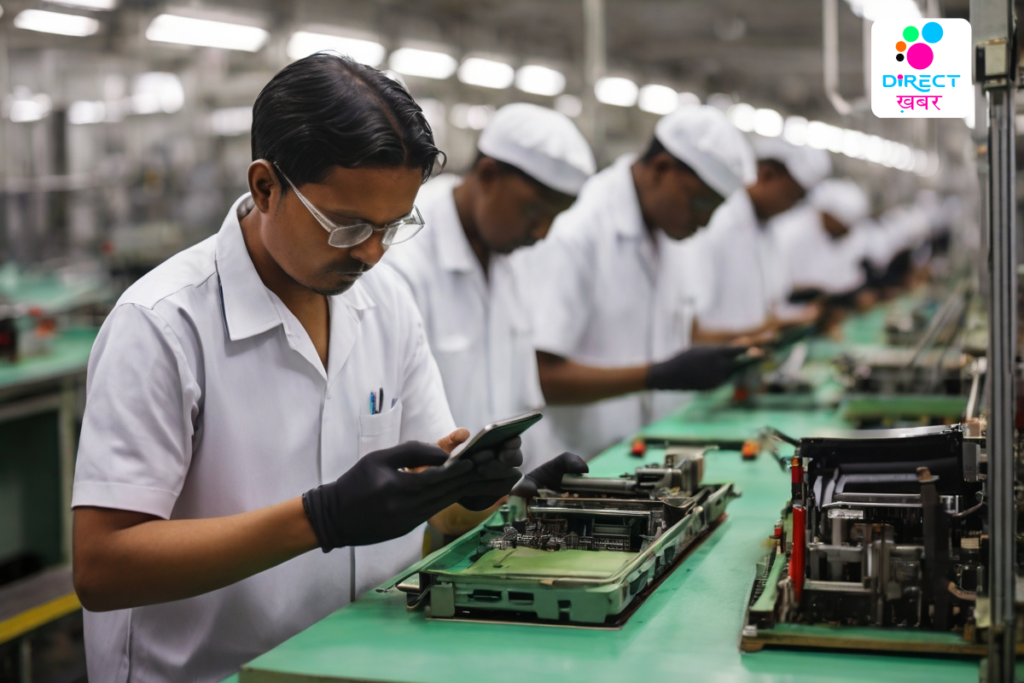Smartphone Manufacturing: Environmental Impact
Smartphones have become indispensable in modern life, but their production comes at an environmental cost. This essay examines the various environmental impacts associated with smartphone manufacturing and explores potential solutions to mitigate these effects.
Raw Material Extraction:
- Overview of raw materials used in smartphone production (e.g., metals, plastics, rare earth elements).
- Environmental consequences of mining and extraction processes (e.g., habitat destruction, water pollution, carbon emissions).
- Case studies highlighting specific environmental impacts of raw material extraction.
Manufacturing Processes:
- Examination of energy-intensive manufacturing processes (e.g., smelting, molding, assembly).
- Impact of manufacturing on air and water quality, as well as soil contamination.
- Assessment of waste generated during manufacturing and disposal of byproducts.

Energy Consumption:
- Analysis of energy consumption throughout the smartphone manufacturing lifecycle.
- Comparison of energy sources used in manufacturing facilities (e.g., fossil fuels vs. renewable energy).
- Strategies for reducing energy consumption and transitioning to renewable energy sources.
E-Waste Management:
- Discussion of the growing problem of electronic waste (e-waste) generated by discarded smartphones.
- Challenges associated with recycling and proper disposal of e-waste.
- Innovative recycling technologies and initiatives aimed at minimizing e-waste and recovering valuable materials.
Lifecycle Assessment:
- Overview of lifecycle assessment (LCA) methodologies used to evaluate the environmental impact of smartphones.
- Case studies illustrating the environmental footprint of smartphones from cradle to grave.
- Importance of considering both direct and indirect environmental impacts in lifecycle assessments.
Environmental Regulations and Corporate Responsibility:
- Examination of regulatory frameworks governing electronic waste management and pollution control.
- Role of corporate social responsibility (CSR) in reducing environmental impact throughout the supply chain.
- Examples of companies implementing sustainable practices and adhering to environmental standards.

Consumer Awareness and Behavior:
- Importance of consumer awareness in driving demand for environmentally sustainable smartphones.
- Strategies for educating consumers about the environmental impact of smartphone manufacturing.
- Ways in which consumers can make more environmentally conscious purchasing decisions and extend the lifespan of their devices.
Future Trends and Solutions:
- Exploration of emerging technologies and innovations aimed at reducing the environmental impact of smartphone manufacturing.
- Potential solutions for designing more sustainable smartphones, such as modular design and eco-friendly materials.
- Collaborative efforts involving industry stakeholders, governments, and environmental organizations to address environmental challenges.
The environmental impact of smartphone manufacturing is a complex issue with far-reaching consequences. By understanding the various aspects of this impact and implementing sustainable practices throughout the supply chain, we can work towards minimizing environmental harm while still enjoying the benefits of modern technology. It is essential for all stakeholders, including manufacturers, consumers, and policymakers, to collaborate and take proactive steps towards a more sustainable future.
In the manufacturing phase, the energy consumption associated with producing smartphones further compounds environmental concerns. Fossil fuel-based energy sources dominate many manufacturing facilities, leading to increased carbon emissions and air pollution.
Additionally, the generation of industrial waste, including hazardous chemicals and byproducts, poses risks to both environmental and human health.
The proliferation of electronic waste, or e-waste, presents a significant challenge in managing the environmental impact of smartphones. As consumers frequently upgrade to newer models, discarded devices contribute to a growing stream of electronic waste, much of which ends up in landfills or incineration facilities.
Improper disposal of e-waste not only contaminates soil and water but also releases toxic substances into the environment, posing risks to wildlife and human populations.
Addressing these environmental challenges requires a multi-faceted approach that engages stakeholders across the supply chain. Manufacturers must prioritize the adoption of sustainable practices, such as resource-efficient manufacturing processes, renewable energy adoption, and responsible waste management strategies.
Consumers can play a crucial role by advocating for environmentally friendly products, extending the lifespan of their devices through repair and reuse, and properly recycling old smartphones.
Furthermore, policymakers have a responsibility to enact regulations that promote environmental stewardship and hold manufacturers accountable for their environmental impact.
Implementing extended producer responsibility (EPR) programs, which require manufacturers to take responsibility for the end-of-life management of their products, can incentivize the adoption of eco-design principles and facilitate the recycling of electronic waste.





